MAC Members and Returning to Work
As we come to the potential end of this COVID-19 Stay at Home Orders in the next couple of weeks (or at least lifting some of the current orders) here are a few things we can pass along to our Members if you all wish to do so:
Here is some information from the CDC for Returning to the workplace:
Workplace Assessment:
- During this shelter-in-place time period, conducting workplace research will provide valuable perspective on your working from home employees that could inform future remote working policies.
- Formulating the questions to investigate will drive the research methods, which could include surveys, virtual focus groups, interviews or ethnographic studies such as photography, video and journaling.
- Gathering this information while employees are still “in situ” at home is essential for validity.
Communications & Training:
- The level of organizational communications prevalent during the work from home period will be maintained after employees are allowed back into the office.
- Openly advertising protocols for visitors, social distancing and housekeeping will establish a sense of trust that employees’ health and safety are top priorities.
- Things will be different around the office and campus post COVID-19, and a robust training and change communications program will establish the “new normal.”
- Examples of change management techniques include establishing back-to-the-office change champions, tours and instructions for using the office space, if it has been newly re-configured for social distancing, and a variety of change communications documents, such as “Frequently Asked Questions postings” and “Stay-Safe Etiquettes guides.” (area that all of our Members may want to think about writing procedures we can help)
Safety Protocols:
Safety protocols can be adapted in various ways.
- Screening procedures for employees, visitors and contractors may use the Infrared Fever Scan Systems (IFss) or other health assessment measures. (these run between $50.00 to $200.00 each)
- Staggered work times/days, or 4-day work weeks can reduce the number of employees in the office at the same time.
- Lunch and break times can be scheduled or lengthened to minimize occupant loads.
- In addition to social distancing and capping group sizes, centralizing trash and recycling bins with frequent disposal can slow disease transmission.
- A clean desk policy devoid of employee memorabilia will enable the night-time cleaning crew to thoroughly clean all desks.
- In addition to the conventional hands-free faucets, and soap and paper towel dispensers, no touch options can be considered for doors, badge readers and garbage/recycling bins.
- The increased use of virtual digital assistants for enterprise applications is another consideration.
- Employees may choose to wear Personal Protective Equipment (PPE) when returning to the workplace to protect the transmission of germs through contact and droplet routes.
- PPEs include face masks, gloves and potentially goggles.
- Organizations may also make these available to employees for personal use outside the office as an additional level of protection.
